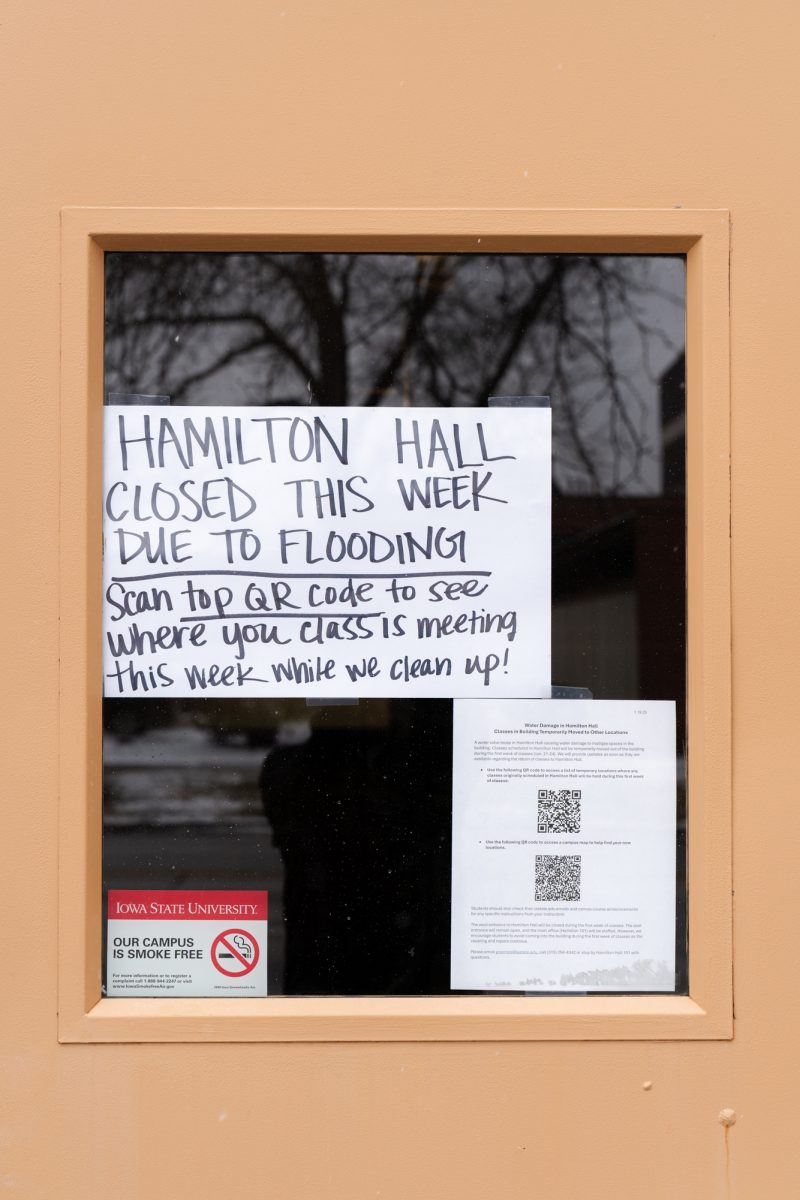Initiatives to stabilize tuition rates in the works
October 12, 2005
Editor’s note: This is the third of a three-part series examining how state allocation cuts and tuition increases have affected the academic climate and students at Iowa State.
Although faculty and administrators say future state allocation cuts and tuition increases would further damage Iowa State’s academic quality, new initiatives could stabilize tuition rates and hire more professors.
Last year, the Iowa Board of Regents drafted the “Regent Partnership Plan for Transformation and Excellence,” a funding strategy requesting the Iowa legislature to allocate an additional $40 million annually from the state and $20 million in institutional budget reallocations. The Partnership Plan was fully funded by the state for the 2005-06 school year, although only after special budget allocations from Gov. Tom Vilsack.
Budget cuts tighten the focus of academic programs and hurt the overall quality of departments, said Paul Lasley, chairman of the sociology department.
“Tough economic times forces one to explore what we’ve done in the past and question whether we have to do all those things,” he said. “It forces you to make tough choices, and any time there are changes made, there are losses.”
Provost Benjamin Allen said Iowa State was fortunate it did not have to eliminate tenured faculty during the past budget cuts, although if fiscal conditions significantly worsen, it is a possibility.
“It’s not easy. It’s not something we like to do, and we didn’t have to do it,” he said.
If budget cuts and tuition increases continue in the future, Lasley said university-wide academic options would suffer.
“The tendency will be to narrow the focus of Iowa State, to preserve or protect the core of colleges,” he said. “Certainly, as we look at decisions about hiring new faculty or creating new programs are going to face more scrutiny than in the past because simply of the dollar constraints.”
Allen said Iowa State remains strong in academic program depth and breadth.
“This is still a university that has a comprehensive range of programs and we need to keep it that way,” he said.
Iowa State’s general academic priority areas for the future include biosciences, information technology and materials sciences, which is in conjunction with the 2005-2010 Strategic Plan, Allen said. He said certain academic departments need attention, because of high student demand, including the psychology department, although he declined to name other areas that could receive more funding.
Continued budget constraints will reduce the variety of courses available and will increase class sizes, Lasley said.
“Larger class sizes means less individualized attention,” he said.
In order to compensate for larger course sections, Lasley said the use of tutorial assistance through computers and e-mail has increased, which reduces personal interaction between instructors and students.
In order to help cope with increasing class sizes, the College of Engineering has proposed a differential tuition plan. If adopted by university administrators and the Board of Regents, junior- and senior-level students would be charged at least $250 more per semester in the 2006-07 school year than other ISU undergraduates.
Mark Kushner, dean of the College of Engineering, said academic quality needs to improve in engineering.
“I would argue that even though I think we are doing a darn good job in terms of quality of education, if we had more faculty – that is lowering the student-to-faculty ratio – there would be smaller section sizes, more electives, maybe you use some of that extra tuition for teaching assistants,” he said.
Thomas Hill, vice president for student affairs, said the added cost of engineering education justifies the additional charge.
“The cost of an engineering education is more expensive than some of the other majors, with all the labs and equipment and professors and stuff,” Hill said. “The cost of the education is more.”
Michigan State University, one of Iowa State’s peer land-grant institutions, already has had a similar differential tuition policy in place since 1992. Despite the increased tuition for junior- and senior-level coursework, overall enrollment has not been affected, according to the Michigan State Office of the Registrar.
If the Partnership Plan is fully funded, tuition would annually increase by 4 percent, which is considered harmonious with the Higher Education Price Index, the Regents’ defining standard of acceptable tuition inflation rates.
Claudia Baldwin, president of the Faculty Senate, said the Partnership Plan is a step in the right direction, although it must be supported in the future to significantly improve the academic climate.
“If the Legislature and the people of Iowa get behind this, we can continue to offer education to Iowan students that is affordable,” she said.
“We are grateful for what we have received this year, but we cannot rebuild our faculty base because of one-time funding.”
Should the Partnership Plan go unfunded in the future, Hill said university-wide cutbacks could be made.
“It’s not like we have an option not to do anything,” he said. “You really may change the face of the institution. You could really look at program elimination and those kinds of things. You don’t want to go down that road, yet. You want to try to take a more reasoned approach and persuade the powers to be to fund the plan.”
For Iowa State’s academic quality to improve, Baldwin said the turnaround rests within adequate funding from state legislators. Should the universities experience further budget reductions, the quality of an Iowa State education will worsen, she said.
“The quality of our university will certainly diminish if we do not get support from the state,” she said. “It will continue.”






